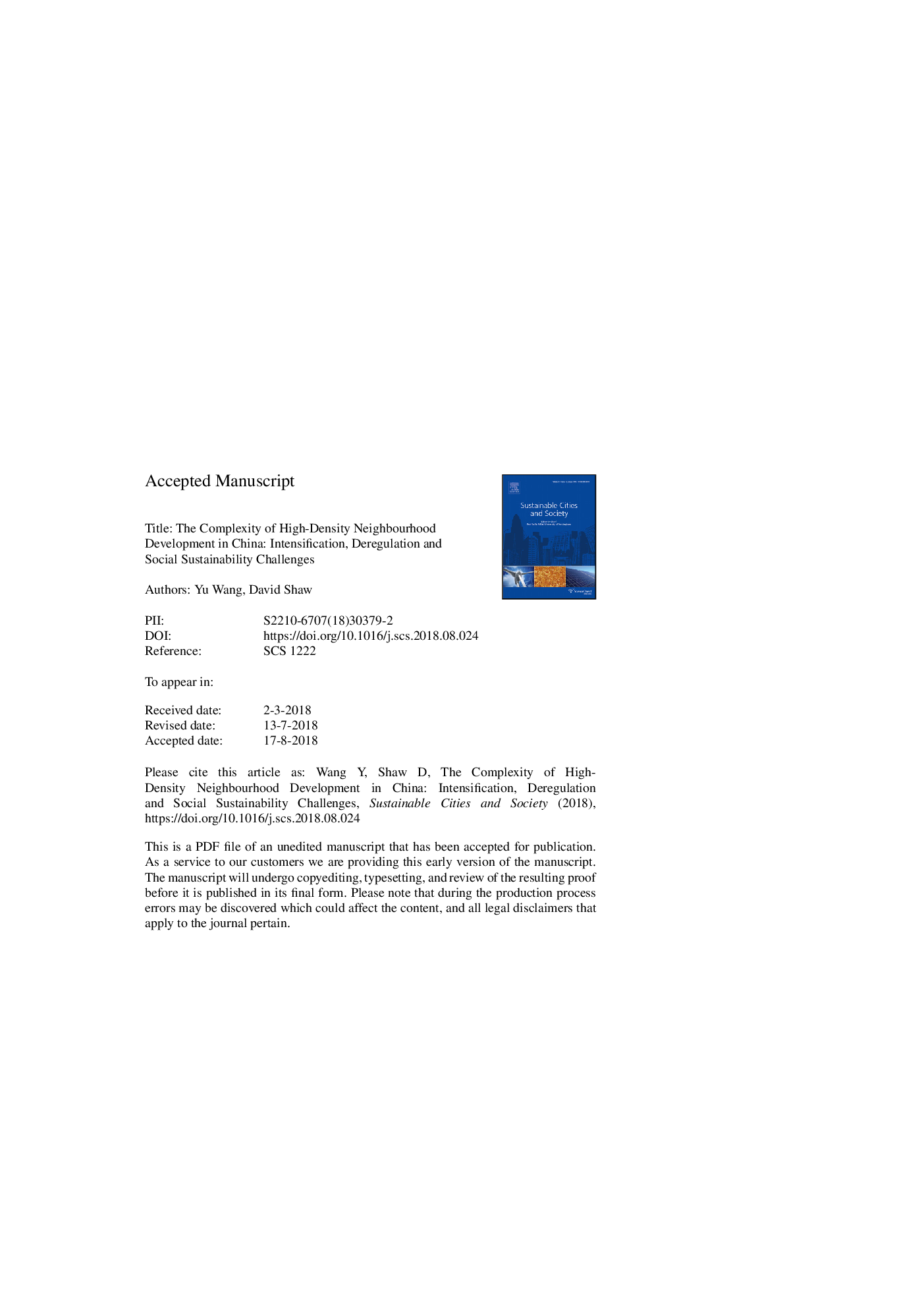| Article ID | Journal | Published Year | Pages | File Type |
|---|---|---|---|---|
| 11032518 | Sustainable Cities and Society | 2018 | 33 Pages |
Abstract
There have been wide ranging and ongoing debates regarding the relative advantages and disadvantages of high-density development for the context of social sustainability. However, little of this discussion has focused on the high-density small-scale development (HDSS), which has emerged as the typical urban form in many large Chinese cities. This paper examines the processes that shape the HDSS neighbourhood and the subsequent social consequences of this development. Document analysis and interview methods were used in a case study of neighbourhood development in the city of Shenzhen. Revealing the trade-offs behind the development of these neighbourhoods, the result reflects the varied roles and interests of different stakeholders and highlights how inadequate consideration is given to the social dimensions of sustainability in contemporary high-density small-scale urban development in China. This is now becoming a great challenge for both the Chinese city and society.
Keywords
Related Topics
Physical Sciences and Engineering
Energy
Renewable Energy, Sustainability and the Environment
Authors
Yu Wang, David Shaw,
